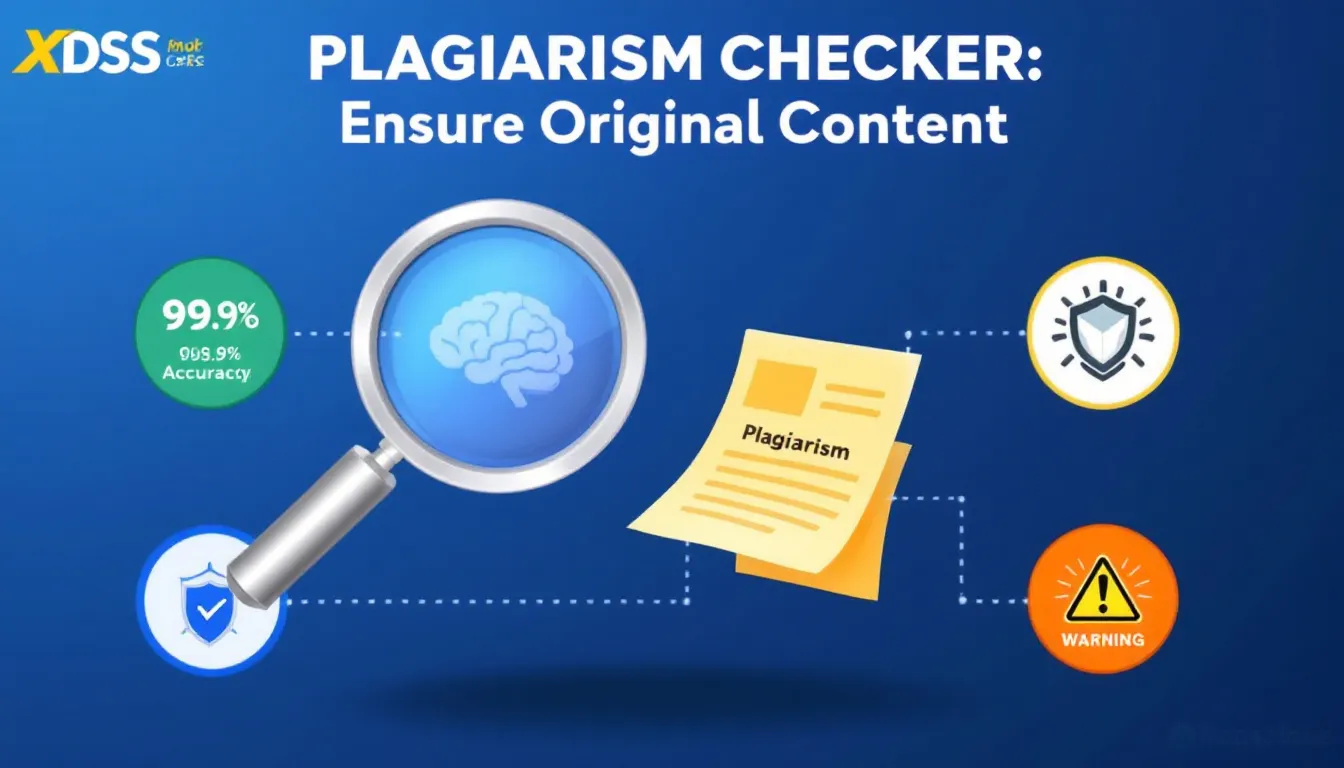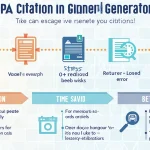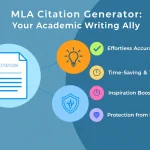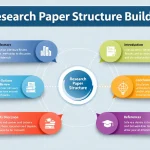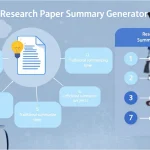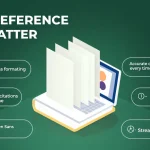Is this tool helpful?
How to Use the Plagiarism Checker Tool Effectively
Our Plagiarism Checker Tool is designed to help you ensure the originality of your content. Here’s a step-by-step guide on how to use it effectively:
- Enter your text: In the first field labeled “The text to be checked for plagiarism,” paste the content you want to analyze. For example, you could input a paragraph from a research paper or a blog post you’ve written.
- Specify the source type (optional): In the “The type of source” field, you can enter the type of content you’re checking. This helps the tool contextualize the analysis. For instance, you might enter “academic research paper” or “marketing blog post.”
- Choose your preferred citation style (optional): If you want suggestions for proper citations, enter your preferred style in the “Preferred citation style” field. Common options include APA, MLA, or Chicago.
- Submit for analysis: Click the “Check for Plagiarism” button to start the analysis process.
- Review the results: Once the analysis is complete, the tool will display a detailed report in the “Plagiarism Check Results” section.
- Copy the results: If you need to save or share the results, use the “Copy to Clipboard” button to easily transfer the information.
Let’s look at two sample inputs to illustrate how to use the tool:
Sample Input 1: Academic Research Paper
Text to check: “The impact of climate change on global biodiversity has been well-documented in recent years. Studies have shown that rising temperatures and changing precipitation patterns are altering ecosystems at an unprecedented rate.”
Source Type: Academic research paper
Citation Style: APA
Sample Input 2: Marketing Blog Post
Text to check: “Content marketing has revolutionized the way businesses connect with their audience. By providing valuable, relevant information, companies can build trust and establish themselves as industry leaders.”
Source Type: Marketing blog post
Citation Style: MLA
Introduction to the Plagiarism Checker Tool
In today’s digital age, maintaining academic integrity and ensuring content originality has become more crucial than ever. Our Plagiarism Checker Tool is a powerful, user-friendly solution designed to help writers, students, researchers, and content creators verify the authenticity of their work and avoid unintentional plagiarism.
This advanced tool utilizes sophisticated algorithms and extensive databases to compare submitted text against a vast array of online and offline sources. By doing so, it identifies potential instances of copied content, improper citations, or unintentional paraphrasing that may require attention.
Purpose and Benefits
The primary purpose of our Plagiarism Checker Tool is to promote academic honesty, protect intellectual property, and maintain the integrity of written work. Some key benefits include:
- Ensuring originality in academic papers, essays, and research articles
- Protecting against accidental plagiarism
- Improving writing skills by identifying areas that need proper citation or paraphrasing
- Enhancing the credibility of content for publishers and businesses
- Saving time in the editing and proofreading process
- Providing peace of mind for writers and researchers
Benefits of Using the Plagiarism Checker Tool
Our Plagiarism Checker Tool offers numerous advantages for a wide range of users. Let’s explore some of the key benefits in more detail:
1. Maintaining Academic Integrity
For students and researchers, maintaining academic integrity is paramount. The tool helps:
- Identify unintentional plagiarism before submission
- Ensure proper attribution of ideas and quotes
- Improve understanding of citation requirements
- Build confidence in the originality of work
2. Enhancing Content Quality
Content creators and marketers can benefit from:
- Verifying the uniqueness of their content
- Identifying areas that need rewording or citation
- Improving SEO by ensuring original content
- Building trust with their audience through authentic writing
3. Time and Resource Savings
The tool offers efficiency benefits such as:
- Reducing manual checking time
- Minimizing the risk of overlooking copied content
- Streamlining the editing and proofreading process
- Allowing focus on content creation rather than verification
4. Legal Protection
For businesses and publishers, the tool provides:
- Protection against copyright infringement claims
- Assurance of original content before publication
- Maintenance of brand reputation through content integrity
5. Educational Value
The tool serves as an educational resource by:
- Teaching proper citation and referencing techniques
- Highlighting the importance of original thinking and writing
- Encouraging critical analysis and paraphrasing skills
Addressing User Needs and Solving Specific Problems
Our Plagiarism Checker Tool is designed to address a variety of user needs and solve specific problems related to content originality. Let’s explore how it accomplishes this:
1. Detecting Unintentional Plagiarism
Many writers, especially students, may unintentionally plagiarize by forgetting to cite sources or improperly paraphrasing. Our tool helps by:
- Identifying text that closely matches existing sources
- Highlighting areas that require citation or rewording
- Providing suggestions for proper attribution
For example, if a student submits the following text:
“The greenhouse effect is a natural process that warms the Earth’s surface. When the Sun’s energy reaches the Earth’s atmosphere, some of it is reflected back to space and the rest is absorbed and re-radiated by greenhouse gases.”
The tool might identify this as potentially plagiarized content and suggest proper citation or rewording.
2. Ensuring Content Uniqueness for SEO
For content marketers and SEO professionals, unique content is crucial. The tool addresses this need by:
- Comparing submitted content against a vast database of web pages
- Providing a uniqueness score for the content
- Identifying any duplicate content issues
For instance, if a marketer submits a blog post about “10 Tips for Effective Time Management,” the tool will check if similar content exists elsewhere on the web and provide a uniqueness percentage.
3. Verifying Source Credibility
Researchers and academics often need to ensure they’re using credible sources. Our tool helps by:
- Identifying the original sources of matched content
- Providing links to these sources for further investigation
- Helping users assess the reliability and authority of their references
For example, if a researcher is writing about climate change and includes data from various studies, the tool can help verify if these studies are from reputable academic sources.
4. Improving Writing Skills
The tool serves as a learning aid for improving writing skills by:
- Highlighting areas where paraphrasing could be improved
- Demonstrating proper citation techniques
- Encouraging critical thinking about source integration
For instance, if a student consistently receives feedback about improper paraphrasing, using the tool regularly can help them understand how to effectively reword ideas while giving proper credit.
5. Streamlining the Editing Process
For editors and proofreaders, the tool expedites the review process by:
- Automatically flagging potential plagiarism issues
- Providing a comprehensive report of originality
- Allowing focus on other aspects of editing, such as style and clarity
An editor working on a magazine article, for example, can quickly run the content through the tool to ensure originality before focusing on fine-tuning the writing style and structure.
Practical Applications and Use Cases
Our Plagiarism Checker Tool has a wide range of practical applications across various fields. Let’s explore some real-world use cases:
1. Academic Research and Writing
Scenario: A graduate student is working on their thesis in environmental science.
Application: The student can use the tool to:
- Check each chapter for unintentional plagiarism
- Ensure proper citation of all referenced works
- Verify the originality of their research findings
Outcome: The student submits a thesis with confidence in its originality, avoiding potential academic integrity issues.
2. Content Marketing
Scenario: A digital marketing agency is creating blog posts for various clients.
Application: The agency can use the tool to:
- Verify the uniqueness of each blog post
- Ensure content writers aren’t inadvertently copying existing material
- Improve SEO rankings by confirming content originality
Outcome: The agency delivers unique, high-quality content that performs well in search rankings and builds client trust.
3. Journalism
Scenario: A news organization is preparing to publish an investigative report.
Application: Journalists and editors can use the tool to:
- Verify the originality of their reporting
- Ensure proper attribution of all sources
- Protect against accidental use of copyrighted material
Outcome: The news organization publishes a credible, well-sourced report, maintaining its reputation for integrity.
4. Legal Document Preparation
Scenario: A law firm is preparing legal briefs for a high-profile case.
Application: Lawyers and paralegals can use the tool to:
- Ensure all arguments are original or properly cited
- Verify the uniqueness of their legal analysis
- Avoid unintentional plagiarism from legal databases
Outcome: The law firm submits robust, original legal documents, strengthening their case and professional reputation.
5. Book Publishing
Scenario: An author is submitting a manuscript to a publishing house.
Application: Authors and editors can use the tool to:
- Check the entire manuscript for potential plagiarism
- Ensure all quotes and references are properly attributed
- Verify the originality of the author’s ideas and writing
Outcome: The publishing house receives a manuscript with verified originality, reducing the risk of copyright issues and enhancing the book’s credibility.
Frequently Asked Questions (FAQ)
1. How accurate is the Plagiarism Checker Tool?
Our tool uses advanced algorithms and compares submitted text against a vast database of sources. While it’s highly accurate, it’s always recommended to review the results carefully and use your judgment, especially for technical or specialized content.
2. Can the tool detect plagiarism in languages other than English?
Yes, our tool supports multiple languages. However, the accuracy may vary depending on the availability of sources in the specific language.
3. How long does it take to check a document for plagiarism?
The processing time depends on the length of the text and the current server load. Typically, results are available within a few seconds to a few minutes for most documents.
5. Can I use this tool to check someone else’s work?
While the tool can check any text, it’s important to respect copyright and privacy laws. Always ensure you have the right to check and potentially publish or use the content you’re analyzing.
6. How often should I use the Plagiarism Checker Tool?
It’s recommended to use the tool for every significant piece of writing, especially for academic or professional purposes. Regular use can help improve your writing and citation skills over time.
7. Can the tool detect paraphrased content?
Yes, our advanced algorithms can detect similarities even in paraphrased content. However, well-paraphrased text with proper citation may not be flagged as plagiarism.
8. Is it necessary to check published works for plagiarism?
Yes, it can be beneficial. Even published works might contain unintentional plagiarism. Checking can help maintain the integrity of your work and avoid potential legal issues.
9. How can I interpret the plagiarism report?
The report typically shows the percentage of matching text and highlights potentially problematic areas. It may also provide links to similar sources. Use this information to guide your revisions and citations.
10. Can the tool help with proper citation?
While our tool primarily focuses on detecting potential plagiarism, it can provide suggestions for proper citation based on the citation style you specify (e.g., APA, MLA, Chicago).
Important Disclaimer
The calculations, results, and content provided by our tools are not guaranteed to be accurate, complete, or reliable. Users are responsible for verifying and interpreting the results. Our content and tools may contain errors, biases, or inconsistencies. We reserve the right to save inputs and outputs from our tools for the purposes of error debugging, bias identification, and performance improvement. External companies providing AI models used in our tools may also save and process data in accordance with their own policies. By using our tools, you consent to this data collection and processing. We reserve the right to limit the usage of our tools based on current usability factors. By using our tools, you acknowledge that you have read, understood, and agreed to this disclaimer. You accept the inherent risks and limitations associated with the use of our tools and services.
